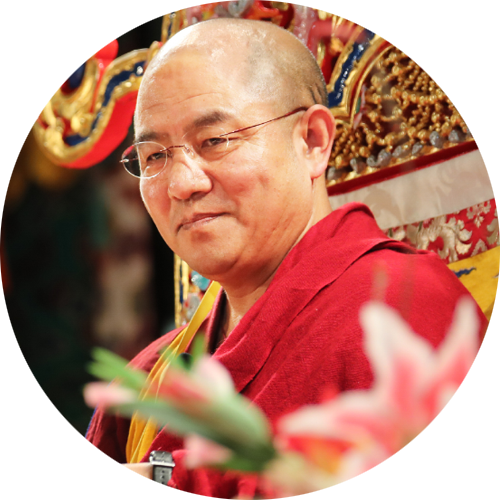Meditation Is an Effective Antidote for Depression
Depression haunts and bothers many modern people. How to deal with it and how to totally get rid of it is probably the most troublesome task for both those who suffer from it and the psychologists. Through his years of experiences helping sufferers of depression, Khenpo Sodargye suggests meditation to be the best antidote, which he believes is a powerful weapon that can “eliminate all kinds of disease, pacify fear, bring peace, joy and happiness.”
Depression is something I have paid close attention to. The reason is that, in the past, people from the Han area and Tibetan area didn’t have a clear notion of depression. It is a newly invented term in recent times. Perhaps this is because symptoms of depression were not well-understood or not as widespread as it is today. But nowadays in China, both young and old many have been suffering from depression at different levels. When listening to them talking about their mental sufferings, I really empathize with them. This has inspired me to conduct studies for the past years. The following are some questions and thoughts related to depression that I have compiled:
What are the approaches to cure this disease? In general, psychologists believe it is a disease caused by stress, so they would attempt to relax the patients and relieve their pressure. Some doctors believe it is related to the “wind” of four elements, so when the patients feel agitated, they would adopt medication treatment, which is said to function as an alleviation.
Medications are available; but once the patients stop taking them, their depression will likely return. Thus, depression cannot be cured thoroughly by these medicines. Besides, it also has some side effects, including impairing one’s brain function and physical health, causing insomnia, etc. Although taking medication is a therapy, it is not so effective.
From my perspective, I have found that meditation—especially meditating on emptiness—is one of the most effective ways of treating depression. Reciting mantras and helping others as much as one can also take effect. All these things mentioned above can genuinely help the patients. Next, based on my own experience, I’d like to share with you how to use meditation as a treatment.
Meditation has long existed in the Buddhist tradition since ancient times. Nowadays, some students believe that mindfulness meditation is newly emerged. Actually, this is not the case. As Shantideva had taught in Bodhicaryavatara back in the 8 th century that,
If, with mindfulness’ rope
The elephant of the mind is tethered all around,
Our fears will come to nothing,
Every virtue drop into our hands.
Since time without beginning, our mind is as wild as an untamed elephant; and vigilance and mindfulness are like a rope that tethers the elephant to avoid its running wildly. If we can harness this ever-wandering mind with vigilance and mindfulness, then various diseases in the world will be eliminated; fears will be pacified; and peace, joy, and happiness can be obtained more readily. This had been clearly stated by Shantideva.
One way to practice mindfulness is to observe the mind using our own mind while resting and not becoming distracted. We can rest in this way for some time both in the morning and in the evening every day. In daily life, just keep the mind relaxed and observe it with vigilance and mindfulness as long as we can. If our practice goes well, we will gradually attain the insight into the true nature of reality, as well as some supramundane achievement of Samadhi. Well, you may not understand so much at this moment, but meditation classes are available in many universities now, which is of great meaning.
Another way of meditation is the practice of the Four Applications of Mindfulness. This includes meditating on the body, the feelings, the mind and phenomena.
For example, when meditating on the body, analyze it from the skin, the flesh, the blood, the bone and the marrow. By examining them one by one we can realize that from inside out, and from top to toe, there’s nothing clean in its nature. When we see another person’s corpse, we’ll think it’s dirty and disgusting. Likewise, by observing every part of our own body, we can clearly know its impurity, thus it helps us lessen our attachment to the body.
In terms of feelings, we experience happiness, sufferings and neutral feelings. Although we may have some pleasure temporarily, ultimately speaking everything is impermanent and always changing. And as long as there is impermanence, there is suffering. Whichever feeling we experience, inherently, it is impermanent and suffering. So there would never exist any permanent and constant happiness, and this is what we should know.
Regarding the application of mindfulness to the mind, our mind is always full of various kinds of discursive thoughts, but while we examine them with wisdom, we’ll find that the future thoughts haven’t arisen, and the past thoughts had already disappeared. And for the present moment, upon observation, no inherent nature can be found either. With repeated examination, we’ll find that the mind transcends the measurement of time. Actually time is just a hypothesis without real existence. And without time, mind can never be established.
Next, through contemplating the phenomena, we come to realize that both the external material world and the sentient beings, if observed one by one, are all empty and devoid of any inherent nature.
